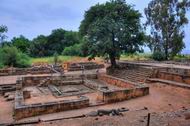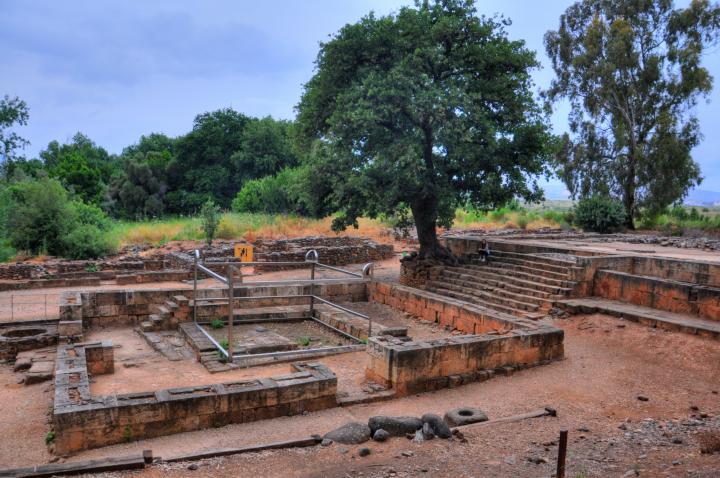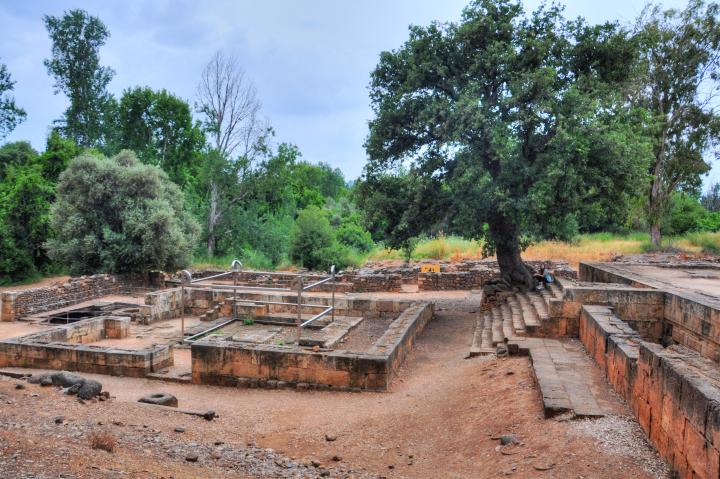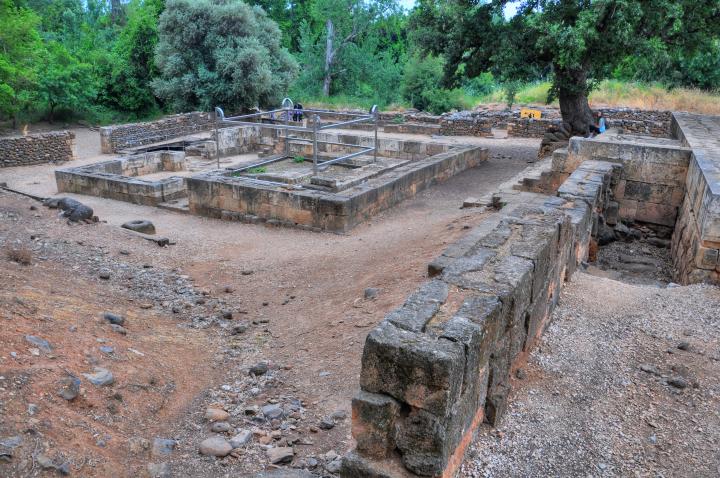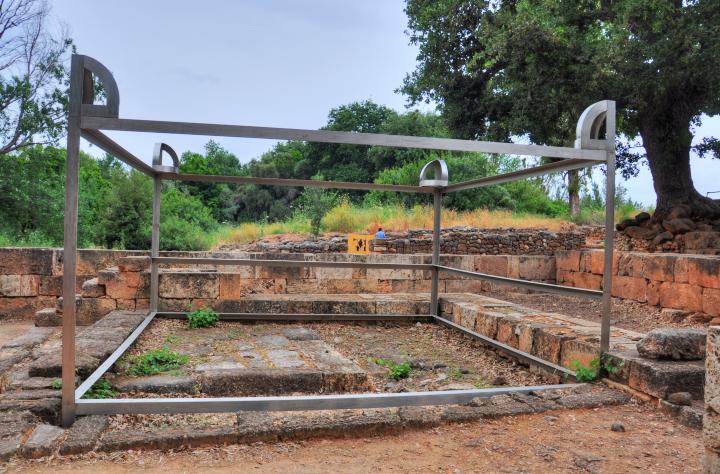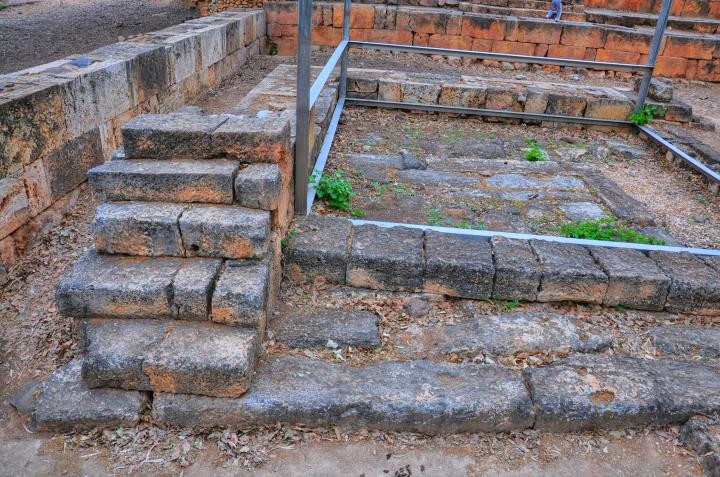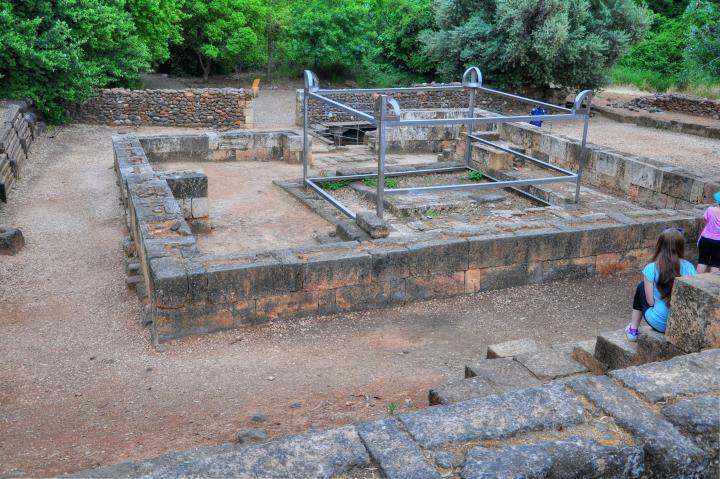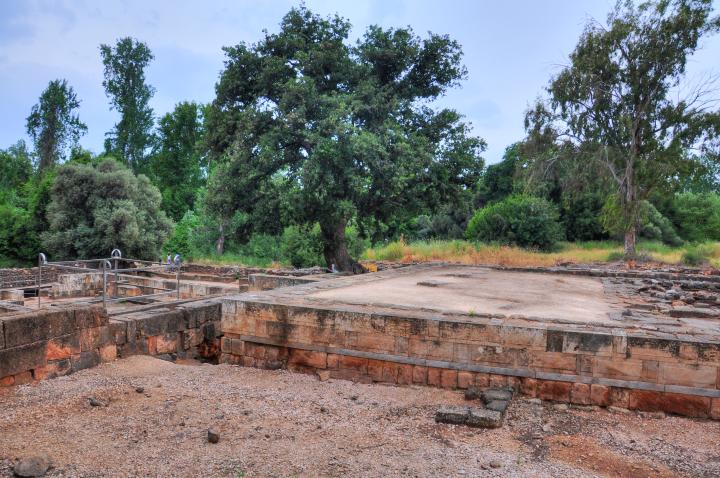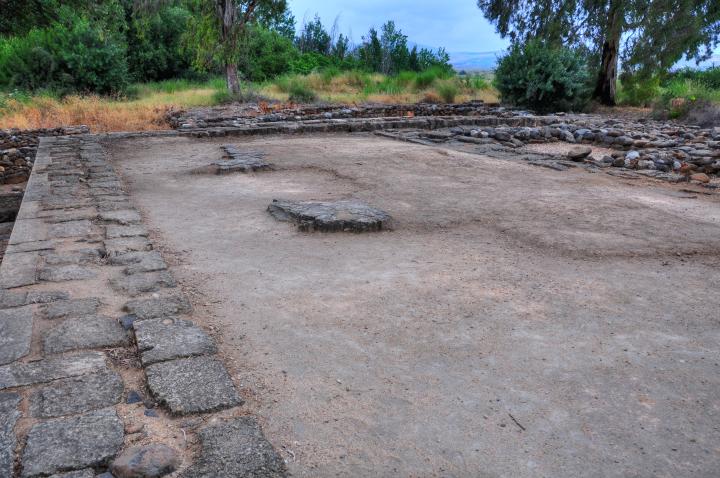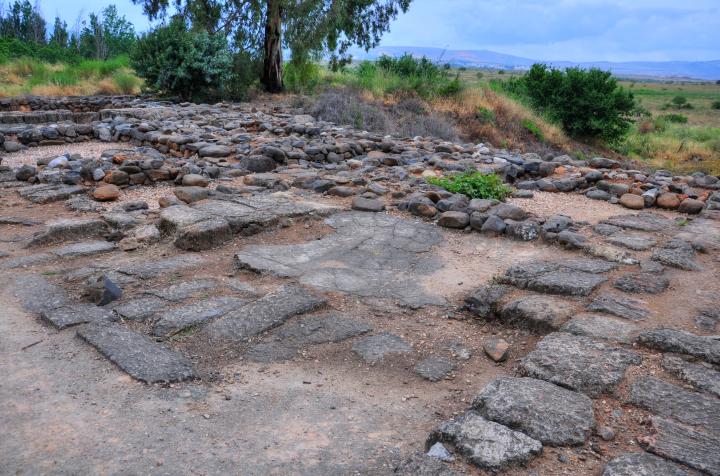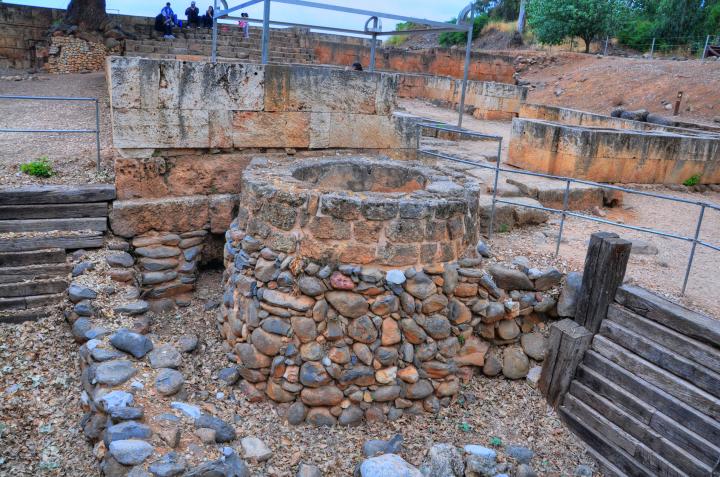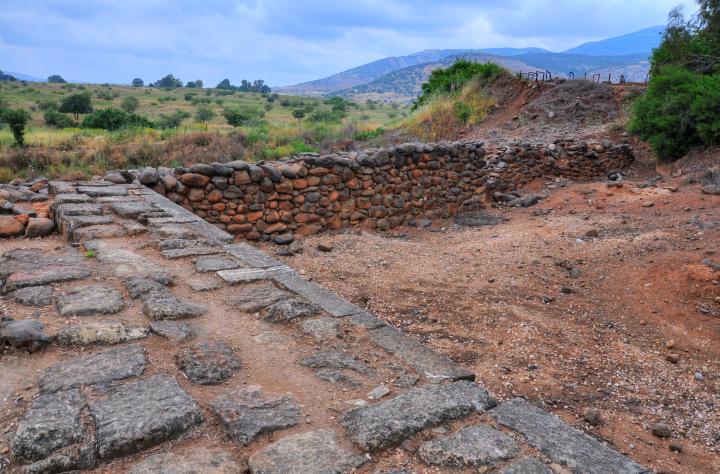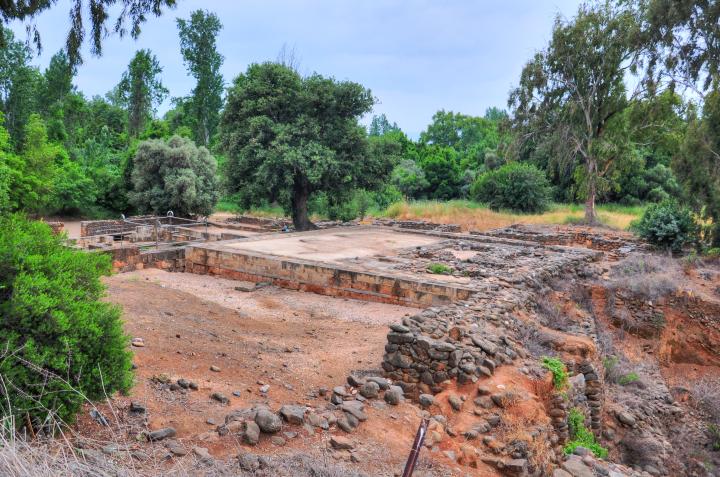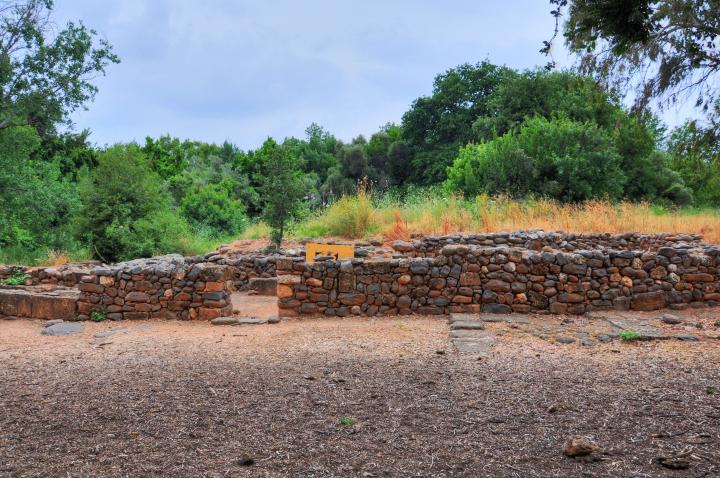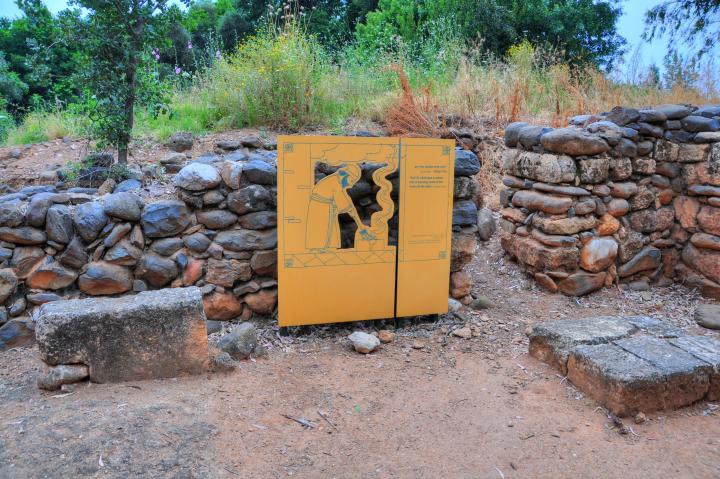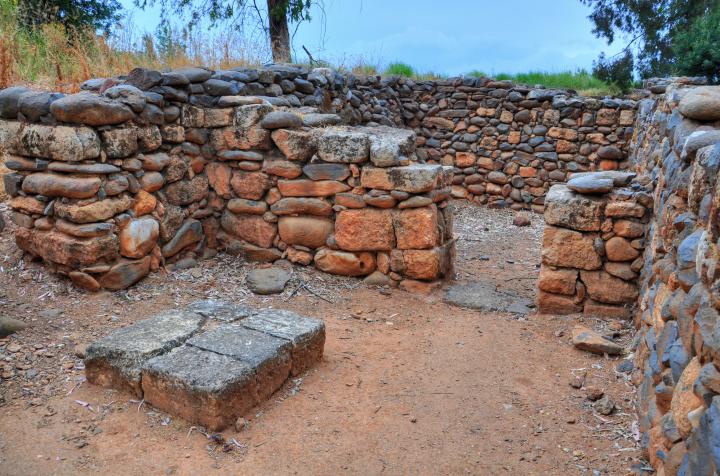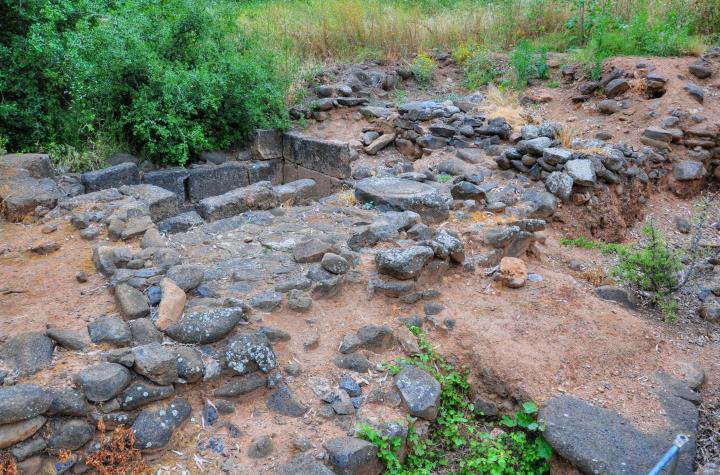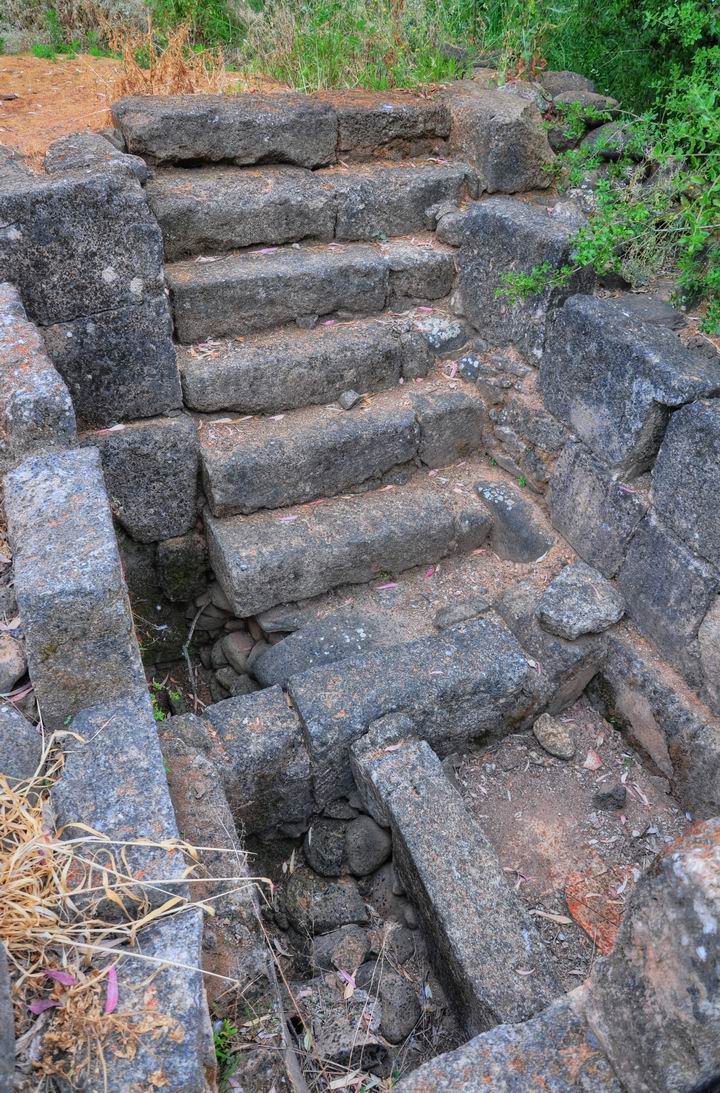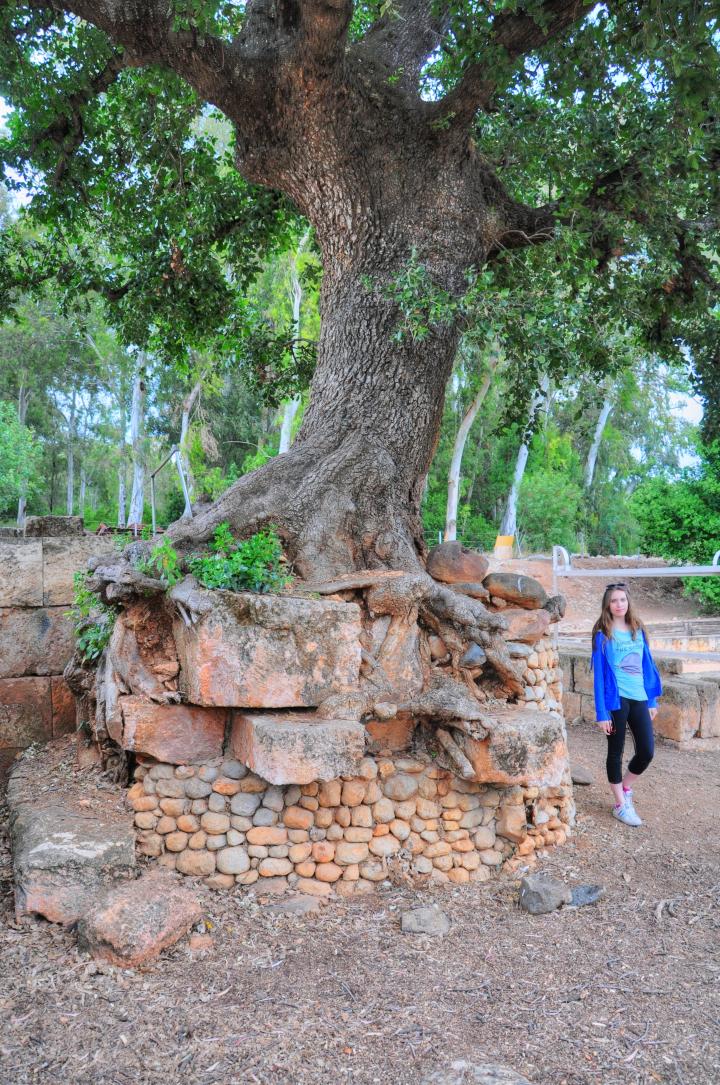This web page focuses on the ritual site in Tell Dan – established by Jeroboam son of Nebat as an alternative worship site for Jerusalem.
Home > Sites > Upper Galilee > East > Dan – High Place
Contents:
Background
History
Photos
* General views
* Altar
* Bamah
* North side
* Priestly chambers
* Nature photos
Etymology
Links
Background:
This web page focuses on the ritual site in Tell Dan, which was established in the 10th century BC by Israelite King Jeroboam son of Nebat as an alternative worship site for Jerusalem.
1 Kings 12:28-31: “… and the other put he in Dan. … And he made an house of high places, and made priests of the lowest of the people, which were not of the sons of Levi”.
For a general description of Dan – see the overview page.
History:
The following focuses on the Israelite period, when the ritual place was established. For a full history – check the overview page.
Jeroboam, son of Nebat, divided the Kingdom after King Solomon’s death. The northern Israelite tribes revolted due to the high taxes levied by Rehoboam son of Solomon, and in 930 BC they established a second Kingdom in parallel to the Kingdom of Judah, ruled by Kings of the house of David.
Jeroboam established in Dan a substitute worship place for Jerusalem. The Bible described these acts of Jeroboam son of Nebat, erecting a golden calf and building an altar (1 Kings 12:28-31): “Whereupon the king took counsel, and made two calves of gold, and said unto them, It is too much for you to go up to Jerusalem: behold thy gods, O Israel, which brought thee up out of the land of Egypt. And he set the one in Bethel, and the other put he in Dan. And this thing became a sin: for the people went to worship before the one, even unto Dan. And he made an house of high places, and made priests of the lowest of the people, which were not of the sons of Levi”.
The ritual precinct was rebuilt in the 9th century BC, by Jeroboam son of Joash. It served the residents of the city throughout the ages, and was in use until the end of the Roman period.
Photos
(a) General View
On the north side of the mound, above the spring and overlooking the valley with beautiful views of Mt Hermon, is the area (45m x 60m) of Tell Dan’s ritual place. Here the excavation team unearthed and reconstructed the remains of a unique Israelite High Place. It was in use since the times of King Jeroboam son of Nebat (930 BC), rebuilt by Jeroboam son of Joash (8th Century BC), and reused during the Hellenistic period (3rd century BC) until the end of the Roman period.
The following photo shows a view of the ritual place complex. It consists of a reconstruction of the altar on the left (the metal frame), the houses of the priests (structures behind the altar), and a large raised platform (“Bamah”, 18.2M x 18.7m) to the right of the great oak tree, with a wide (8m) staircase leading up from the altar.
Click on the photos to view in higher resolution…
The Bible described the acts of Jeroboam son of Nebat, erecting a golden calf and building an altar in Dan. The purpose of the ritual place was to serve as an alternative worship site for Jerusalem, after dividing the Kingdom. As per 1 Kings 12:28-31:
“Whereupon the king took counsel, and made two calves of gold, and said unto them, It is too much for you to go up to Jerusalem: behold thy gods, O Israel, which brought thee up out of the land of Egypt. And he set the one in Bethel, and the other put he in Dan. And this thing became a sin: for the people went to worship before the one, even unto Dan. And he made an house of high places, and made priests of the lowest of the people, which were not of the sons of Levi”.
One of the interesting findings was a bilingual (Greek-Aramaic) inscription which was found in this site, and attests to the sanctity and the identity of the place. It reads: “To the God who is in Dan”.
(b) The Altar
In the center of the complex was a small raised stone structure – the altar. The metal frame marks the boundaries of the structure.
A staircase led to the top of the altar:
The photo below shows a view of the sacred precinct from the north side, with the altar in the center.
(c) High Platform
A large high platform is located on the north side of the altar.
The platform is known in the Bible as the “Bamah” – stage, or “high place”. The raised platform measures 18.2M x 18.7m, and is made of elegantly cut ashlars (stone masonry utilizing dressed stones).
An example of a Biblical reference of Bamah (2 Kings 23:9): “Nevertheless the priests of the high places came not up to the altar of the LORD in Jerusalem”.
A rear section of the platform is seen below.
(d) Hellenistic period remains
The ritual place was in use during the Hellenistic and the Roman periods, a thousand years after it was established. The round reservoir near the wall of the altar, and the external wall on the south side of the ritual place, were constructed during the Hellenistic period. Animal bones were found near the reservoir, the remains of animal sacrifice. This attests to the continued practice during those times. This is a common practice in many sites – the ancient holy places were reused for hundreds of years and by different religions.
(e) North Walls
The ritual precinct borders with the northern walls of Dan, with a great panorama of Mt Hermon and the valley to the north of Dan.
A view of the high walls along the high place:
A view of the high place from the northern walls:
(f) Priestly Chambers
A number of rooms were excavated along the western walls of the ritual complex. These served the priests that conducted the services. The Bible wrote about these priests in Dan (1 Kings 12:31): …And he made an house of high places, and made priests of the lowest of the people, which were not of the sons of Levi”.
The duties of the priests, including the handling of the fire of the altar, are detailed in the Bible (Leviticus 16 12):”And he shall take a censer full of burning coals of fire from off the altar before the LORD, and his hands full of sweet incense beaten small, and bring it within the vail.”.
Another view of this section, a working place of the priests and a small altar, is shown in the next picture:
On the western side is a baptismal. This side is closer to the Dan springs and received fresh spring water.
Stairs lead to the bottom of the baptismal pool.
(g) Nature
Between the altar and the raised platform is a great oak tree. The excavators dug around it, leaving some of the ruins caught between its giant roots. The wall of small white pebbles was added on the lower level in order to protect the exposed roots.
Etymology (behind the name):
- Bamah: Hebrew: High Place. There are many Biblical references, such as Solomon’s large site in Gibeon (1 Kings 3 4):”And the king went to Gibeon to sacrifice there; for that was the great high place: a thousand burnt offerings did Solomon offer upon that altar”. These high places were forbidden by Hebrew law, and the Bible commands their destruction. This is why it is rare to find such sites in Israel.
Links:
* External sites on Tel Dan –
- Tel Dan Nature reserve
- Tel Dan – Archaeology in Israel (2002)
- Dan – the Biblical city
- Tel Dan Excavations blog
* Internal sites:
BibleWalks.com – Travelling with a Bible in the hand
Dan Canaanite City<<<–previous site—<<<All Sites>>>—next Upper Galilee site—>>> Dan Nature reserve
This page was last updated on June 3, 2010
Sponsored links:
